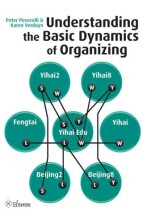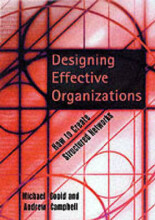Sonenshein: Were changing - or are we? Untangling the role of profressive, regressive, and stability narratives during staretgic change implementation
10 important questions on Sonenshein: Were changing - or are we? Untangling the role of profressive, regressive, and stability narratives during staretgic change implementation
According to Sonenshein strategic change involves altering employees' construction of meanings by using a discourse that sets a new direction for a firm. What are other conclusions of the study?
By considering the narratives of managers and employees, as well as allowing for a broadened meaning space, Sonenshein elaborated theory around two pathways by which constructions influence strategic change implementation. Explain the 2 narrative pathways.
2. Perservational: the managers' stability narrative constructs the change as consistent with the status quo: freezing employees' existing meaning constructions. Employees do not construct new meanings for the organization and instead construct the change as consistent with the status quo.
What are the three findings of Sonenshein?
2. That insignificant meanings were more common earlier in the change for converting stores (period)
3. That more subversive meaning were constructed at non-converting stories (context) and later in the change (period).
> Employees do not directly import managerial narratives about change, but rather the embellish (verfraaien) them. This suggests a potential danger of unfreezing employees. Because it may be a different direction than management hopes for/expects. Employees also have some agency to cosntruct their own meanings that deviate from those managers.
- Higher grades + faster learning
- Never study anything twice
- 100% sure, 100% understanding
Which 3 types of responses are described by Sonenshein?
2. Championing: captures statements about making the change a success, such as promotion the change to others
3. Accepting: captures statements about making necessary adjustments to implement the change, such as learning new procedures
Explain the difference between significant constructions and insignificant constructions (Sonenshein)
Insignificant: Focused on how the change did not dramatically alter the organization or was minor or cosmetic.
What is a narrative according to Sonenshein?
Which two related lenses are according to Sonenshein useful for examining meaning constructions during change? Explain them.
2. A sensemaking lens (closely related to a narrative one), sensemaking involves individuals engaging in retrospective and prospective thinking in order to construct an interpretation of reality.
Sonenshein conducted a field study at a retailer implementing strategic change. What was his broad research question?
One common characteristic of many theoretical and practitioner models of change is that they explicitly or implicitly endorse basic three-stage theory of change. Explain (Sonenshein)
Data suggests that managers tell strategically ambiguous interwoven narratives about how an organization changes and how it remains the same, thereby attempting to both unfreeze and free the existing meanings of employees attribute to the organization. Employees establish these narratives to make sense of and narrate responses to change (resisting, championing, and accepting), something patterned by time period and context. What does Sonensheins study revise?
The question on the page originate from the summary of the following study material:
- A unique study and practice tool
- Never study anything twice again
- Get the grades you hope for
- 100% sure, 100% understanding






























